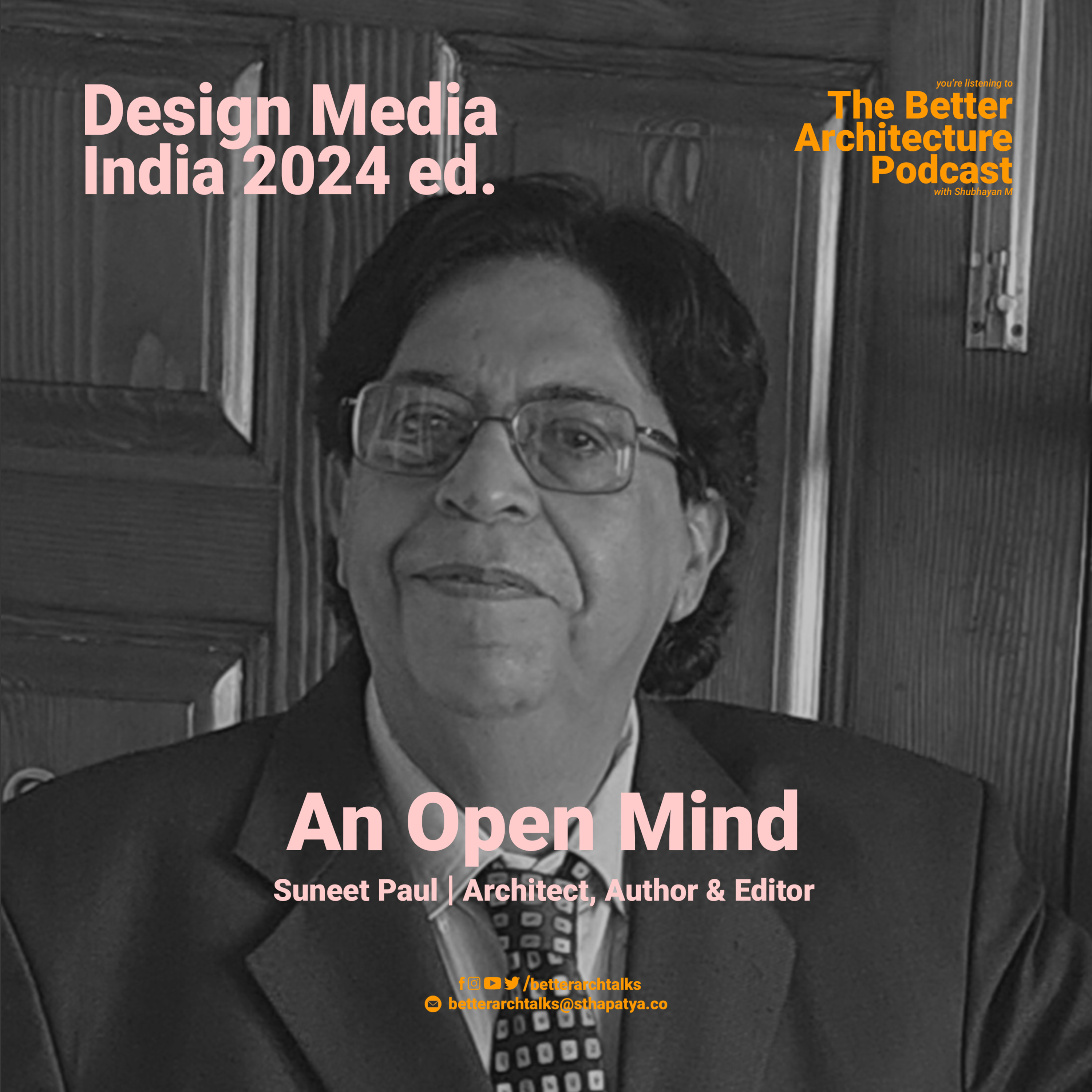Media as a Mirror
Episode at a glance
The discussion delves into the critical role of media (as a mirror) as a reflection of the true state of architecture and design, identifying its current shortcomings in India, such as a lack of criticality and self-congratulatory tendencies. Rohan Shivkumar critiques the complacency seen in architectural magazines, conferences, and awards, calling for a more challenging and reflective discourse to enable growth and meaningful dialogue within the profession.
He highlights his transition to filmmaking to explore spatial narratives and human connections, emphasizing the importance of formal training and collaboration in producing quality outputs. The economic challenges of documentary filmmaking in India are addressed, with Rohan underscoring the importance of financial stability and acknowledging the difficulties posed by restrictive funding sources and limited opportunities.
The conversation explores the potential for an institutional framework dedicated to architectural media. While advocating for such a platform, Rohan warns against the risks of power dynamics and class biases that often accompany institutional structures. He stresses the need for inclusiveness, both linguistically and socially, to broaden the scope and impact of architectural journalism.
Finally, Rohan calls for recalibrating the architectural media landscape to reflect diverse practices and realities, balancing critical and commercial objectives, and fostering honest and constructive dialogue. He emphasizes that architectural media must act as a critical voice rather than merely validating the profession, encouraging the creation of spaces for meaningful confrontations and evolving perspectives.
——————————————————————————————————————————————
Thematic highlights of the conversation
- Design Media as a Mirror
Media must critically reflect the state of architecture and design, but its current form in India fosters complacency through a lack of critical engagement. Conferences and awards perpetuate self-congratulatory cycles instead of fostering meaningful dialogue. - Social Media’s Dual Role
Social media serves as a platform for showcasing architectural work and enabling activism, such as opposition to the Central Vista project. It also highlights the limitations of mainstream media through unfiltered critiques from students. - Filmmaking as a Spatial Medium
Rohan views filmmaking as a medium for exploring spatial narratives and human connections, constructing complex arguments, and engaging deeply with audiences. - Role of Formal Training in Media
Formal training is essential for avoiding amateurish outcomes, with collaboration playing a critical role in enhancing creative outputs. - Economics of Documentary Filmmaking in India
Funding for documentaries is increasingly scarce, with restrictive foreign agendas further limiting opportunities. Financial stability outside filmmaking is advised for sustainability. - Importance of Collaboration
Collaborative efforts enhance creative endeavors by leveraging individual strengths and fostering a richer creative process. - Medium vs. Message
Rohan stresses the inseparability of medium and message, arguing that manipulating the medium enriches the depth and complexity of communication. - Role of Gadgets in Creative Outputs
The quality of creative work depends on respecting and understanding the medium rather than relying on high-end tools. Craftsmanship lies in realizing the potential of available materials. - Future of Architectural Media
An institutional framework for architectural media could foster critical discourse, provided it avoids power dynamics and prioritizes inclusivity in addressing class and linguistic biases. - Class Bias in Architectural Media
The narrow definition of “good architecture” is rooted in class privilege and modernist aesthetics. Media must recalibrate to reflect diverse practices and realities. - Balancing Commercial and Critical Media
Rohan challenges the notion that critical media cannot be commercially viable, citing historical examples of thriving critical discourse in mainstream media. - Creating Honest Dialogues
Constructive platforms are needed to enable candid debates and differing perspectives, fostering critical conversations through choreographed dialogues as a starting point.
——————————————————————————————————————————————
Disclaimer: The views expressed by the guest are contextual responses to the host’s questions, holding immediate relevance within the scope of the conversation; the points discussed are part of a larger, interconnected knowledge network. This summary is provided for the ease of readers and should not be interpreted in isolation. You are encouraged to engage with the full episode on Spotify to gain a comprehensive understanding.
——————————————————————————————————————————————
You can connect with Rohan and his works here: Website | LinkedIn | Instagram | X/Twitter | Facebook
Copyright 2024 @BetterArch.org















